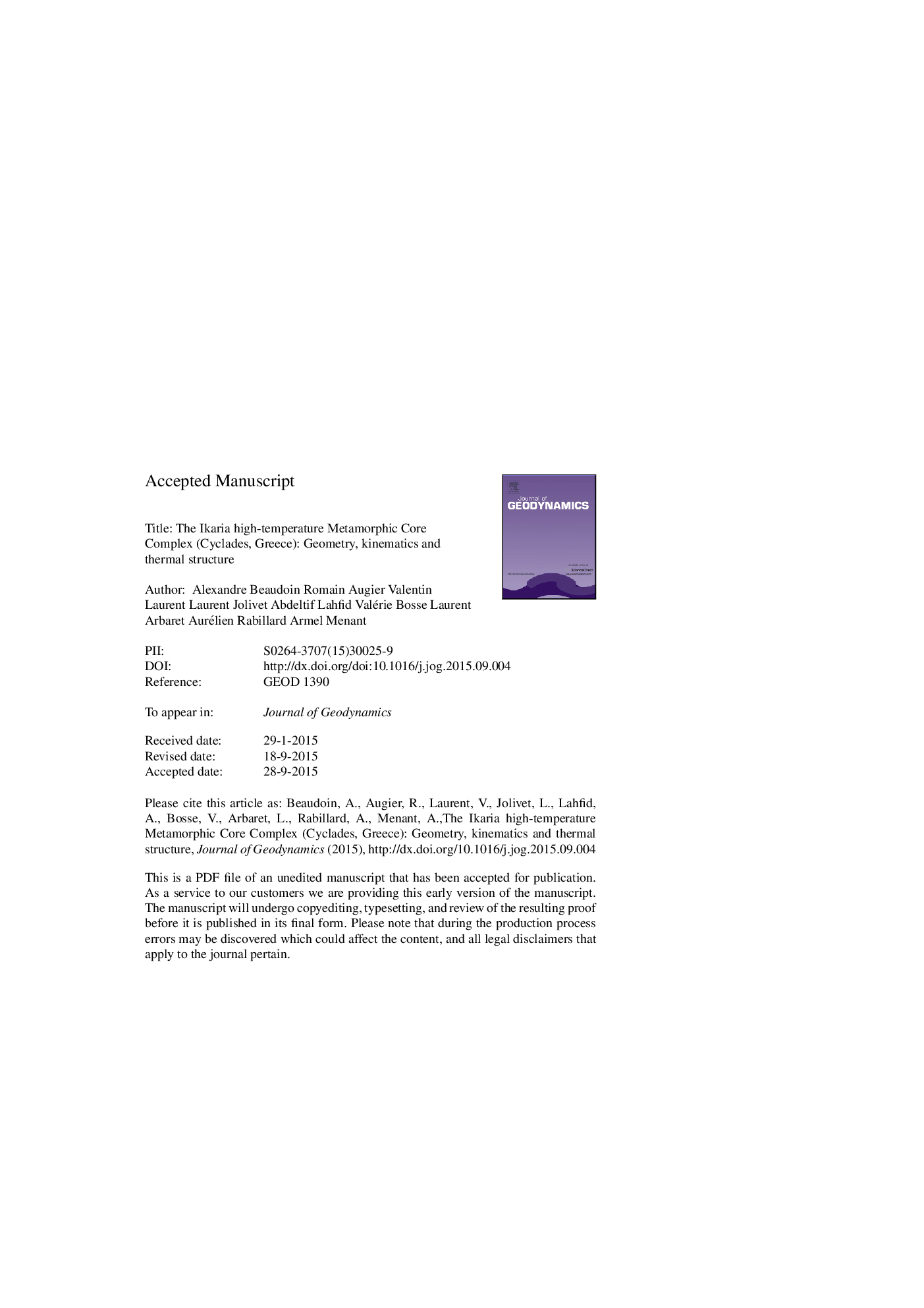| Article ID | Journal | Published Year | Pages | File Type |
|---|---|---|---|---|
| 4687987 | Journal of Geodynamics | 2015 | 87 Pages |
Abstract
This work attempted at clarifying the structure of Ikaria using primarily intensive geological mapping combined with structural analysis and a geothermometry approach of Raman spectrometry of carbonaceous material. Foliation over the whole island defines a structural dome cored by high-grade to partially molten rocks. Its exhumation was completed by two top-to-the-N ductile extensional shear zones, operating in the ductile and then the brittle fields, through a single extensional event coeval with progressive strain localization. The thermal structure of the dome with regard to position of ductile shear zones was retrieved using the Raman spectroscopy of carbonaceous material. Peak-metamorphic temperatures range from 390 °C in the upper parts of the structure down to 625 °C in the core of the dome in the vicinity of migmatites and S-type granite. Pioneer in situ U-Th-Pb analyses on monazite performed on the leucosome parts of these rock yielded a 15.7 ± 0.2 Ma age. Ikaria Island thus completes the series of Miocene migmatite-cored Metamorphic Core Complex in the central part of the Aegean domain where a genuine high-temperature zone can be defined as the central Aegean HT zone. There, the extreme stretching of the continental crust is associated with dominantly top-to-the-N kinematics.
Related Topics
Physical Sciences and Engineering
Earth and Planetary Sciences
Earth-Surface Processes
Authors
Alexandre Beaudoin, Romain Augier, Valentin Laurent, Laurent Jolivet, Abdeltif Lahfid, Valérie Bosse, Laurent Arbaret, Aurélien Rabillard, Armel Menant,
